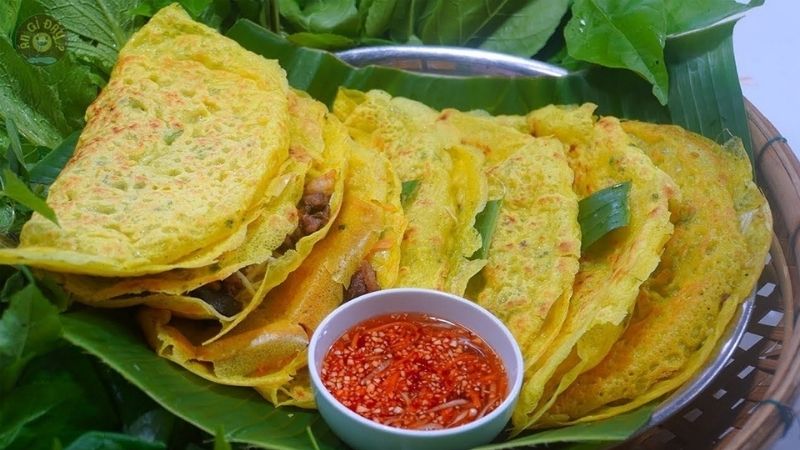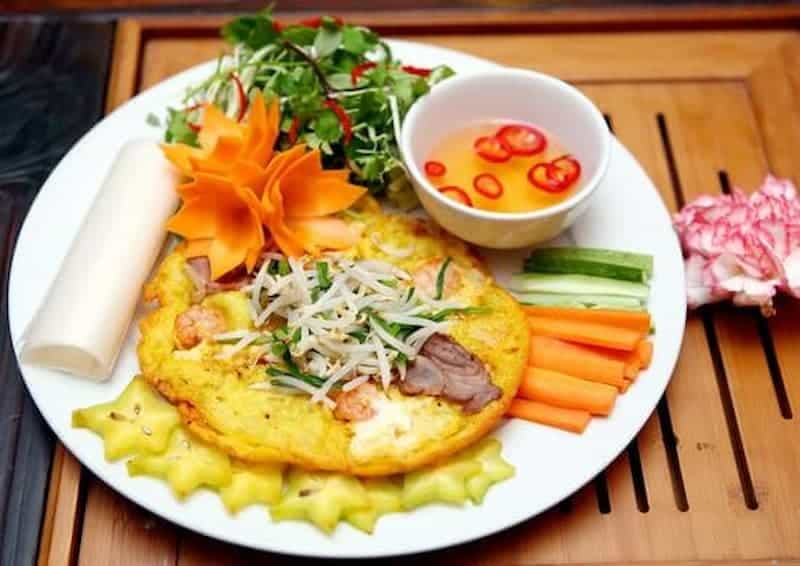Bánh Khoái
1. What is Bánh Khoái?
Bánh Khoái is a crispy, savory pancake that comes from Huế, a city known for its royal cuisine and rich food culture. Although it looks similar to southern Vietnam’s bánh xèo, Bánh Khoái is smaller, thicker, and has a unique flavor that reflects the culinary style of central Vietnam.
2. Characteristics of Bánh Khoái
This dish stands out because of its golden, crispy crust and the rich fillings inside. It is typically made in small, round molds, making it thicker and crunchier than other Vietnamese pancakes. Bánh Khoái is served hot, often accompanied by fresh vegetables, herbs, and a special dipping sauce called nước lèo (a rich peanut and sesame sauce).
3. Ingredients
The batter for Bánh Khoái is made from rice flour, turmeric powder, and water, which gives it a beautiful yellow color. The filling usually includes shrimp, sliced pork, bean sprouts, and sometimes quail eggs or mushrooms. It is pan-fried until crispy, then served with fresh lettuce, starfruit, green banana slices, and herbs like perilla and basil. The dipping sauce is key—made from pork liver, peanuts, fermented soybeans, and sesame, it’s thicker and richer than typical Vietnamese sauces.
4. How to Enjoy Bánh Khoái
To eat Bánh Khoái, you usually wrap a piece of the pancake in a lettuce leaf along with herbs and dip it into the flavorful sauce. It’s crunchy, aromatic, and full of layers of taste. Bánh Khoái is often enjoyed as a snack or light meal and is especially popular with both locals and tourists in Huế. Many small restaurants or street stalls near Dong Ba Market or along the Perfume River specialize in this dish.
5. Cultural Importance
Bánh Khoái is a symbol of Huế’s royal and rustic culinary traditions. It reflects the region’s love for bold flavors and beautiful presentation. Although it uses simple ingredients, the dish requires skill to make it perfectly crispy and flavorful. Bánh Khoái is not only a delicious meal but also a part of Huế’s cultural identity, offering visitors a deeper taste of central Vietnam’s food heritage.



